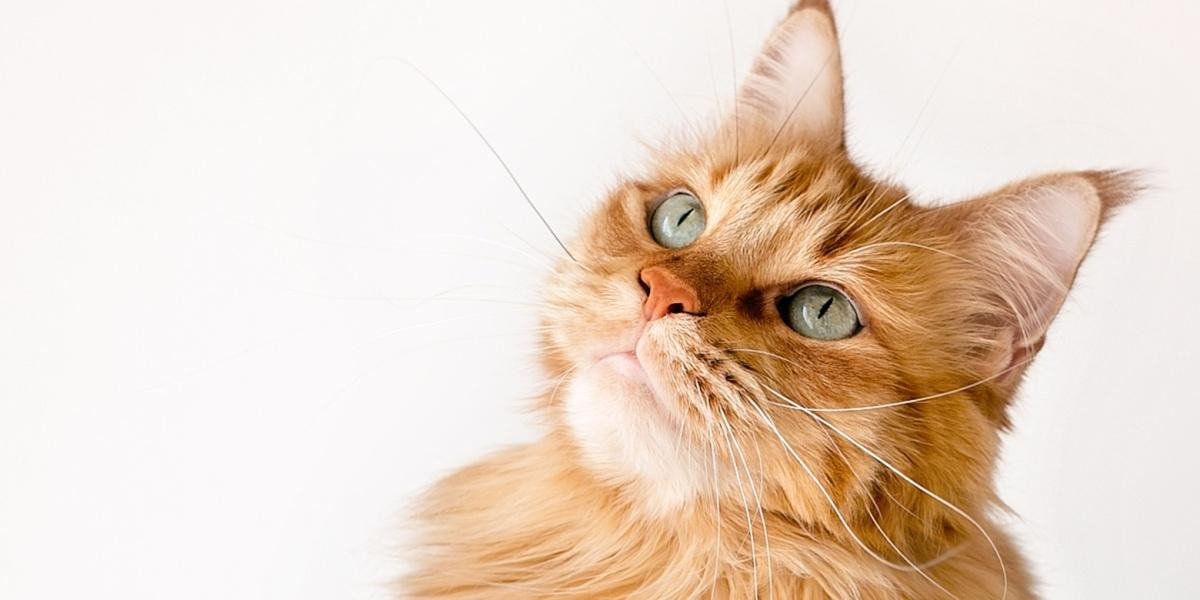 A long-haired orange cat looks up with gentle eyes
A long-haired orange cat looks up with gentle eyes
When you think of famous feline figures, names like Garfield, Morris, and Milo might spring to mind. What do they all share? Their striking orange tabby coats. While “orange tabby” isn’t a breed itself, it’s an undeniably iconic and beloved coat pattern in the cat world. Within this vibrant group, the Orange And White Tabby Cat holds a special place, combining the warmth of orange with the crispness of white, creating a truly captivating look.
The term “tabby” describes one of the most common coat patterns among both wild and domestic cats, characterized by stripes, swirls, and spots. Tabby cats come in a beautiful array of colors, but the orange tabby, especially the orange and white combination, is particularly striking and sought after.
Because “orange tabby” refers to a coat pattern and not a specific breed, generalizations about temperament and personality can be tricky. However, there are fascinating aspects unique to orange tabbies, and even more so to the delightful orange and white variety. Let’s delve into what makes these bi-colored beauties so special.
Unveiling the Magic of Orange and White Tabby Cats
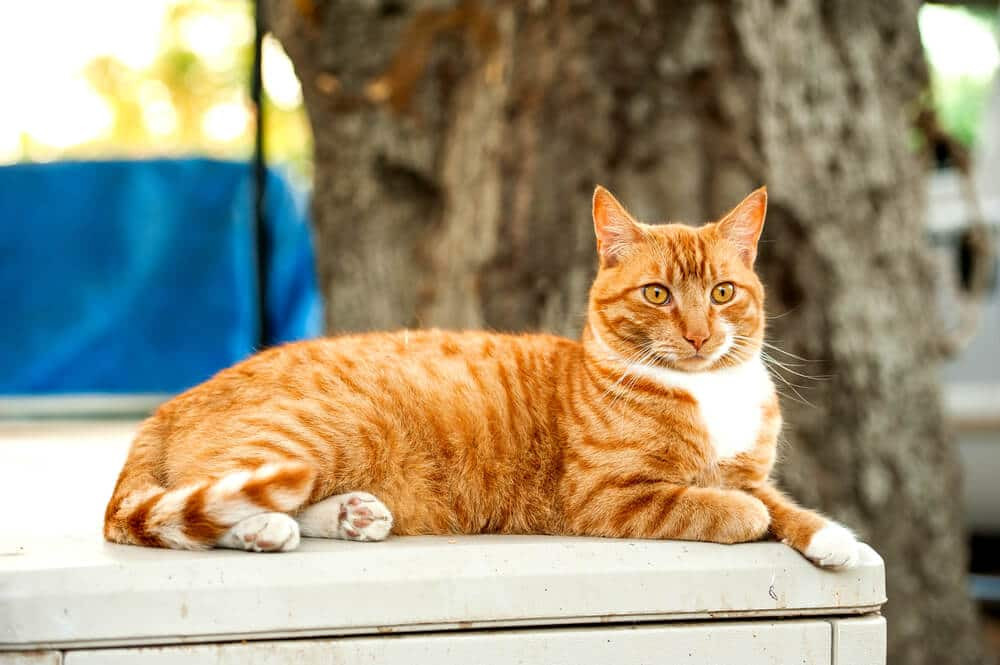 orange tabby
orange tabby
All cats possess a unique charm, but orange and white tabby cats stand out with their vibrant coats and distinctive patterns. The term “tabby” encompasses a spectrum of markings, from stripes and spots to swirls, adorning a cat’s body.
Depending on breed and individual genetics, the tabby pattern can appear in patches, localized to specific areas, or cover the entire cat. Orange and white tabbies showcase this pattern in a bi-color presentation, where patches of tabby patterns are set against a backdrop of white fur.
The tabby pattern itself manifests in five main variations:
- Mackerel
- Classic
- Spotted
- Ticked
- Patched
While tabby cats display diverse patterns, most share some degree of striping. In some orange and white tabbies, bold stripes are clearly visible, running along their backs and bodies. In others, the striping is more subtle, perhaps appearing only on the legs and tail, contrasted beautifully against white fur.
Beyond coat patterns, tabbies generally share identifiable characteristics:
- A distinctive “M” marking on the forehead
- White or dark outlines around the eyes, often emphasized by the orange and white contrast
- Pigmented paw pads and lips
- Delicate “pencil” lines on the face
- Lighter coloration on the chin and belly, frequently white in orange and white tabbies
- Banding on legs and tail, which can create a striking contrast with white sections.
With a clearer understanding of the physical traits defining orange and white tabbies, let’s explore the five tabby patterns, and how they manifest in these bi-colored felines.
1. Mackerel Orange and White Tabby Cat
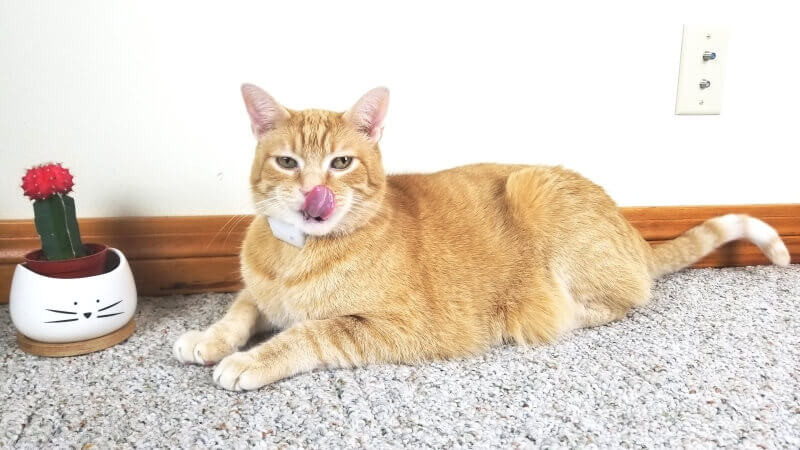 ProTrackTor.Wessie
ProTrackTor.Wessie
When picturing an orange and white tabby, many envision the mackerel pattern. This iconic “tiger cat” look features narrow stripes running parallel down the body. Ideally, mackerel stripes are evenly spaced and unbroken. In orange and white mackerel tabbies, these stripes are often a rich orange, sharply defined against the white base coat, particularly on the flanks and legs.
Despite resembling tiger stripes, the mackerel pattern originates from a central stripe along the spine, branching out to resemble a fish skeleton, hence the name “mackerel.” In bi-color cats, the white fur can sometimes break up the perfect symmetry of the mackerel pattern, adding to their unique charm.
2. Classic Orange and White Tabby Cat
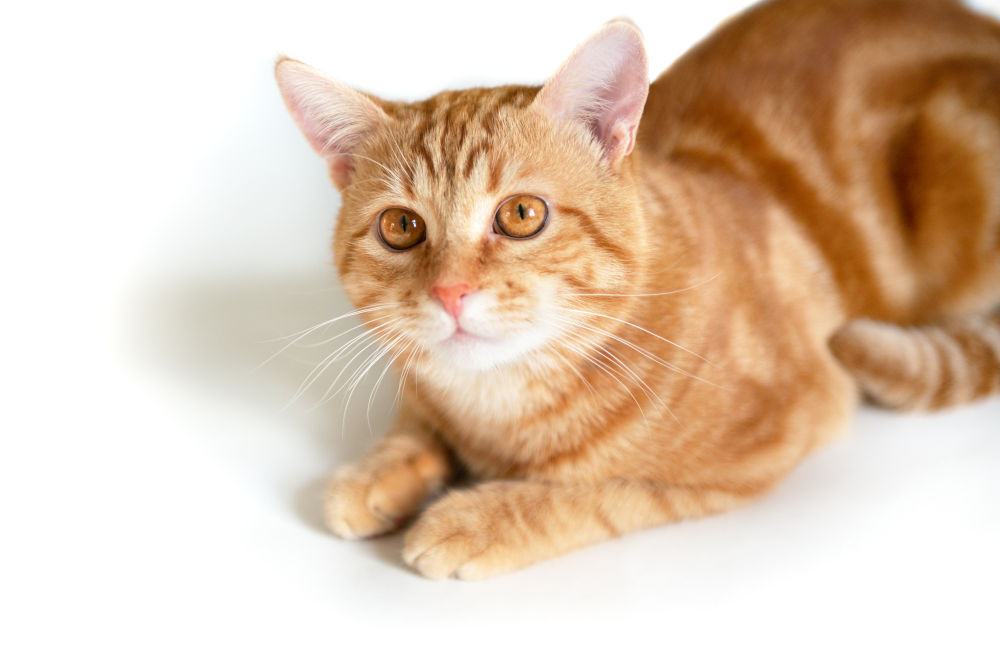 Classic orange tabby
Classic orange tabby
While the mackerel tabby might be the quintessential tiger cat, the classic tabby pattern is the most common overall. Classic orange and white tabbies exhibit bold, swirling patterns on their backs, reminiscent of marbling in a cake. These swirls are a mix of light and dark orange, often forming a bullseye shape, beautifully contrasted against white patches, especially on the chest, paws, and belly.
The combination of the swirling classic tabby pattern with the white fur creates a soft, almost plush appearance, making these cats incredibly appealing.
3. Spotted Orange and White Tabby Cat
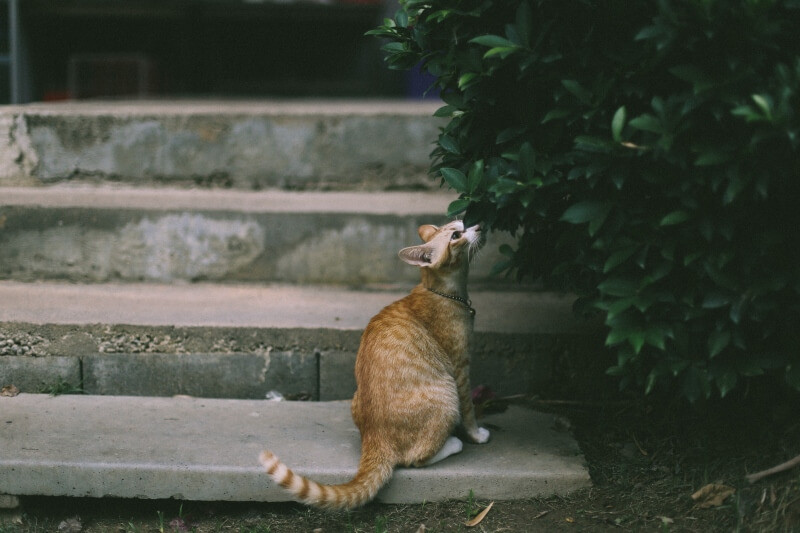 Spotted Tabby Cat
Spotted Tabby Cat
Tabby cats are primarily associated with stripes, but spots are another common pattern. Spotted orange and white tabbies have distinct spots of varying sizes across their sides. These spots can sometimes be difficult to differentiate from a mackerel tabby pattern that has broken stripes. In bi-color cats, the spots are often highlighted by the surrounding white fur, making them appear even more defined.
The origin of spotted tabby cats is still debated by experts, unsure if they evolved from mackerel tabbies or simply developed through different genes. Regardless of origin, the spotted pattern in orange and white tabbies is visually striking and less common than stripes or swirls.
4. Ticked Orange and White Tabby Cat
This tabby variation is the most unique and can be challenging to recognize as a tabby at first glance because obvious stripes or spots are absent. Ticked orange and white tabbies display the typical tabby “M” forehead marking and agouti fur (hair with alternating light and dark bands). However, any stripes or spots are very subtle, often only visible in bright light. In orange and white bi-colors, the ticked pattern is typically seen in the orange patches, while the white areas remain solid white.
The ticked tabby pattern is most commonly seen in breeds like the Somali and Abyssinian. In orange and white cats, the ticked pattern provides a more understated tabby effect, contrasting with the solid white sections to create a sophisticated look.
5. Bi-Color Orange and White Tabby Cat: The Definition
 Orange and white kitten playing
Orange and white kitten playing
While traditional tabby cats often display a consistent tabby pattern across their bodies, orange tabby cats frequently appear in a bicolor pattern. In fact, when people refer to “orange and white tabby cats,” they are specifically talking about this bi-color combination. These tabbies feature a mix of tabby patches, darker in color than the overall coat, combined with areas of pure white fur.
The classic example is an orange tabby cat with distinct white patches, often on the face, chest, paws, and belly. This bi-color presentation highlights the orange tabby pattern against the clean white backdrop, enhancing the visual appeal and making them instantly recognizable and adored.
The Genetics Behind the Orange and White Coat
Understanding the genetics of feline coat color helps explain why orange and white tabby cats are so visually unique. Coat color and pattern are primarily determined by genes located on the X chromosome. Female cats have two X chromosomes (XX), while males have one X and one Y (XY).
Cats inherit genes from both parents, with the wide spectrum of cat colors originating from just two base colors: black and orange (or red). Each kitten receives two copies of each gene, one from each parent, and these genes can be dominant or recessive.
The gene for orange coloring (O) is dominant. A kitten only needs to inherit one copy of this gene to express some degree of orange in its coat. This dominance is key to understanding the prevalence of orange in tabby cats, and particularly in orange and white combinations.
Interestingly, this genetic mechanism also explains why most orange tabbies are male. For a female cat to be orange, she must inherit the orange gene on both of her X chromosomes. Statistically, only about 20% of orange kittens are female.
The tabby pattern itself is determined by the agouti gene. “Agouti” describes hair with alternating bands of light and dark pigment, creating a speckled or “salt and pepper” appearance. Kittens inheriting a dominant agouti gene (A) will display a visible tabby pattern. Those inheriting the recessive agouti gene (a) will not, resulting in a solid-colored coat. However, even solid-colored cats can exhibit subtle “ghost striping” – faint tabby markings – if they inherit two copies of the recessive gene (aa).
In orange and white tabby cats, the complex interplay of these genes results in the beautiful bi-color patterns we admire. The orange gene combined with the agouti gene creates the tabby markings, while separate genes control the distribution of white fur, masking the color in certain areas and creating the distinct patches.
Personality and Temperament of Orange and White Tabbies
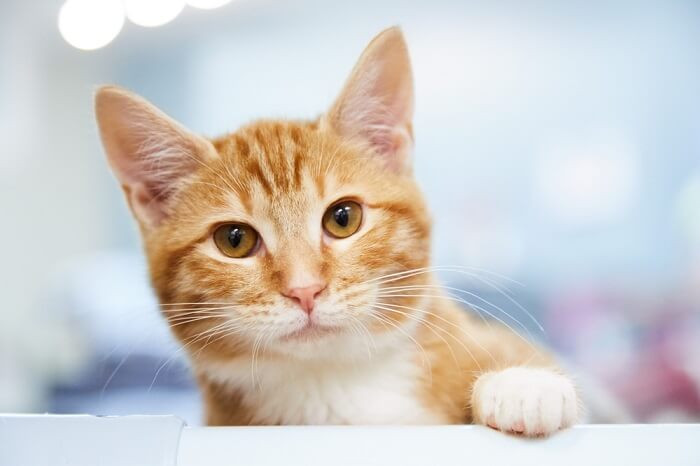
Since “orange and white tabby cat” describes a coat pattern and not a breed, generalizing about personality and temperament requires considering breed and upbringing. The best indicator of an orange and white tabby’s personality is its breed and individual experiences.
For those who adopted their cat from a shelter or as a stray, determining breed can be challenging. A helpful tool is the Basepaws cat DNA test. Basepaws analyzes a saliva sample to provide a detailed report on breed groups and genetic relatives, offering insights into your cat’s ancestry.
Several breeds commonly exhibit the orange tabby coloration, and frequently, the orange and white bi-color pattern:
The American Curl, known for its uniquely curled ears, often presents in tabby patterns, including orange and white. These cats are known for their affectionate and people-oriented nature.
The Egyptian Mau, a rare and athletic breed, can also display tabby patterns. While less common in orange and white, they are known for their playful and loyal personalities.
The Javanese, a longhaired variant of the Oriental, frequently comes in tabby patterns. These vocal and intelligent cats thrive on interaction and can be very attached to their owners. Orange and white Javanese tabbies are particularly striking.
Also Read: 8 Gorgeous Orange Cat Breeds That Make Great Pets (With Pictures)
The Ragdoll, a colorpoint breed, is known for its gentle and docile temperament. While colorpoint, Ragdolls can have tabby markings in their points, and orange and white Ragdolls are highly sought after for their beauty and calm nature.
While generalizations across coat patterns are broad, anecdotal evidence suggests that orange and white tabby cat owners often describe their cats as particularly friendly, affectionate, and even slightly more vocal than other cats. They are often considered good family pets, known for being tolerant of children and other animals. However, remember that individual genetics and upbringing are the most significant factors shaping your orange and white tabby’s personality.
12 Fun Facts About Orange and White Tabby Cats You Might Not Know
Discover some fascinating facts about orange and white tabby cats:
- Orange and white tabby cats are often called “ginger and white” or “marmalade and white” cats. These endearing nicknames highlight their warm coat colors and bi-color patterns.
- The majority of orange and white tabby cats are male due to genetics. The X chromosome carries the orange gene, requiring only one copy for males, but two for females, leading to a higher proportion of male orange and white tabbies.
- The orange gene is dominant over most other coat colors except white. This dominance explains why white is a frequent bi-color partner with orange in tabby cats.
- Orange and white tabby cats often develop charming freckles on their noses and mouths. These dark freckles are common in orange tabbies and tend to appear by around two years of age.
- An orange and white tabby cat’s personality is more influenced by breed than coat color. They can be found across various breeds, each contributing unique personality traits.
- All orange cats are technically tabbies, though not all tabbies are orange. Even solid orange cats often display subtle “ghost striping,” particularly noticeable in sunlight. This is also true for the orange patches in orange and white tabbies.
- The distinctive “M” marking on the forehead is present in all tabby cats, including orange and white ones. This inherited trait links them to their wildcat ancestors.
- Anecdotally, orange tabbies, including orange and white ones, are considered more talkative. While temperament is individual, some believe coat color might have a subtle link to vocalization tendencies.
- Garfield, the world-famous lasagna-loving cartoon cat, is an orange tabby, inspiring many to love the pattern, especially in bi-color.
- Winston Churchill’s beloved orange tabby cat, Jock, was an important part of his life. Churchill’s affection for Jock led to a tradition of orange cats in the Churchill home, highlighting the special bond people form with orange tabbies. Jock VI, the current resident, is an orange and white tabby.
- Morris, the mascot for 9Lives cat food, is an iconic orange tabby. Morris’s long-running advertising campaign cemented the image of the orange tabby as a beloved and relatable cat.
- Stubbs, a ginger cat, served as the honorary mayor of Talkeetna, Alaska for nearly two decades. Stubbs’s long tenure demonstrated the public’s affection for ginger cats, including orange and white tabbies, and their ability to charm and connect with people.
Relevant Articles:
Frequently Asked Questions
Are all orange and white tabby cats male?
No, but the majority are male due to genetics. Males need only one orange gene, while females need two, making male orange and white tabbies more common.
Do orange and white tabby cats have specific health problems?
Health issues are more breed-related than coat color-related. An orange and white tabby’s health depends more on its breed and individual health history.
How long do orange and white tabby cats live?
Indoor house cats typically live 15-20 years. A healthy diet and regular vet care can help maximize an orange and white tabby’s lifespan, just like any other cat.
